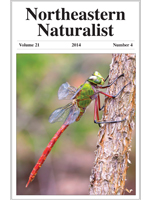The systemic insecticide imidacloprid is commonly used to protect trees against attack by the Adelges tsugae (Hemlock Woolly Adelgid [HWA]), an invasive pest that threatens Tsuga canadensis (Eastern Hemlock) and T. caroliniana (Carolina Hemlock) in eastern North America. Although there have been some studies documenting the short-term (1–3 years) impact of imidacloprid on non-target arthropods in hemlock systems, almost nothing is known about the impact over longer time scales. Here, using a set of trees which were experimentally treated 3 and 9 years prior to this study, we found that while the impact of imidacloprid on HWA may be approaching the limits of detection and efficacy on trees treated 9 years ago, there is still an intermittently detectable impact on HWA density. Similarly, 9 years after application there is a subtle but detectable increase in arthropod richness and a shift in canopy-arthropod community composition. Results from the 3-year treated trees were, however, ambiguous, but may be the result of detectable cross-contamination of insecticide among trees.
How to translate text using browser tools
1 March 2015
Long-Term Effects of Imidacloprid on Eastern Hemlock Canopy Arthropod Biodiversity in New England
Wing Yi Kung,
Kelli Hoover,
Richard Cowles,
R. Talbot Trotter
ACCESS THE FULL ARTICLE

Northeastern Naturalist
Vol. 22 • No. 1
March 2015
Vol. 22 • No. 1
March 2015




